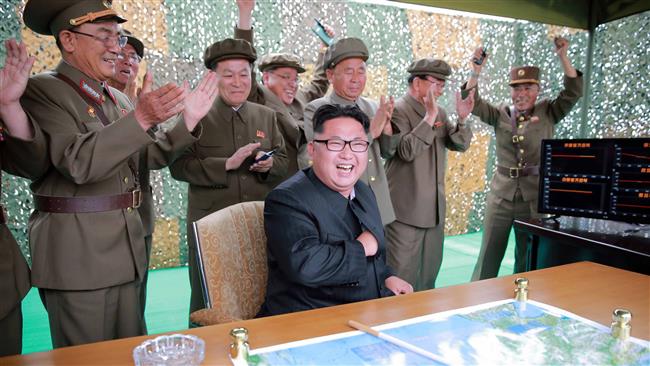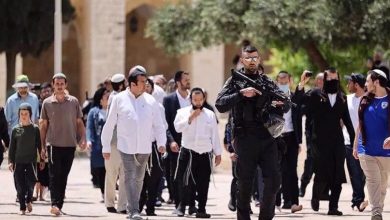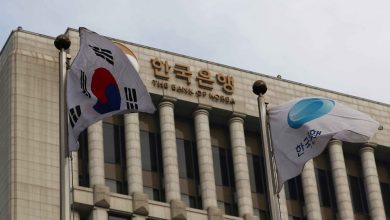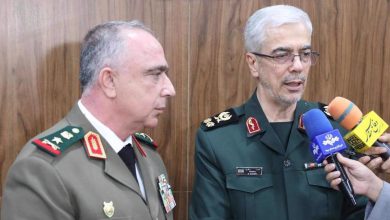Missile test simulates nuke strikes on US targets in S Korea: Pyongyang


Pyongyang says its latest ballistic missile test simulates the launching of preemptive nuke strikes against US bases in South Korea, and was personally monitored by North Korea’s Supreme Leader Kim Jong-un.
According to a statement released by North Korea’s official KCNA news agency on Wednesday, the test “examined the operational features of the detonating devices of nuclear warheads mounted on the ballistic rockets at the designated altitude over the target area,” and aimed at mimicking possible strikes on South Korean ports and airfields hosting US military “hardware.”
Early on Tuesday, Pyongyang launched three ballistic missiles, believed to be two SCUD missiles and a Rodong medium-range missile, from an area in the North’s western region into the Sea of Japan, just over a week after threatening a “physical response” to the US’s deployment of the sophisticated Terminal High Altitude Area Defense (THAAD) missile system in the South.
In a statement released shortly after the launch, South Korea’s military said that “the ballistic missiles flight went from 500 kilometers to 600 kilometers, which is a distance far enough to strike all of South Korea including Busan.”
This undated picture released by North Korea’s official Korean Central News Agency (KCNA) on June 23, 2016 shows a test launch of the surface-to-surface medium long-range strategic ballistic missile Hwasong-10 at an undisclosed location in North Korea. (AFP)
Washington and Seoul began intense consultations on THAAD after North Korea conducted its fourth nuclear test in January, which was followed by a satellite launch and a string of test-launches of various missiles.
THAAD has been designed to intercept ballistic missiles inside or just outside the atmosphere during their final phase of flight.
Last week, Seoul confirmed that THAAD would be installed in Seongju County about 200 kilometers (135 miles) southeast of Seoul by the end of next year. The announcement, however, sparked several large protests staged by residents of the county, who fear potential risks to local environment and security.
Separately, the United Nations also denounced Pyongyang’s Tuesday missile tests and said that they were in violation of existing UN resolutions against the North.
“The DPRK’s firing of missiles is deeply troubling. Such actions are not conducive to reducing tensions on the Korean Peninsula.” said Farhan Haq, a spokesman for UN Secretary General Ban Ki-moon.
Thousands of South Korean residents hold up red banners reading “We absolutely oppose THAAD deployment,” in Seongju, July 13, 2016. (AFP)
The UN has generally imposed a ban on Pyongyang’s developing of the ballistic missile technology. It has adopted five rounds of crippling sanctions on the North since it first tested an atomic device in 2006.
Tensions have been flaring in the region since January, when North Korea said it had successfully detonated a hydrogen bomb, its fourth nuclear test, and vowed to build up its nuclear program as deterrence against potential aggression from the US and its regional allies.
A month later, Pyongyang launched a long-range rocket which it said placed an earth observation satellite into orbit. However, Washington and Seoul denounced it as a cover for an intercontinental ballistic missile test.
North Korea says it will not give up on its nuclear deterrence unless Washington ends its hostile policy toward Pyongyang and dissolves the US-led UN command in South Korea. There are around 3,000 US troops permanently stationed in South Korea.
The two Koreas technically remain in a state of war after the 1950-53 Korean War ended in an armistice, not a peace treaty.




